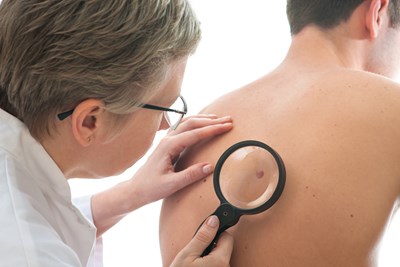The Various Forms of Skin Cancer
There are 3 kinds of skin cancer cells: squamous cell cancer, basal cell carcinoma, and melanoma. Each kind is distinct, produces various signs and has differing therapy techniques.
Squamous Cell Carcinoma
Squamous cell cancer is the 2nd most usual kind of skin cancer cells. This skin cancer cells kind generally establishes in locations on the body that have actually been around the sun, like ears, the mouth and the face, however can establish anywhere on the body. The current known cause of squamous Cell Carcinoma is the Human papilloma virus. Squamous cell cancer is known as the second most typical kind of skin cancer cells. When left unattended, it can spread out rapidly to various other body parts, like the lymphatic system, blood stream and nerve paths.
Signs are extremely variable depending upon the involved body organs. Squamous cell carcinoma of the skin starts as a little nodule and as it expands the center ends up being lethal and sloughs and the nodule becomes an ulcer. The sore triggered by SCC is typically asymptomatic. Ulcer or red skin plaque that is slow-moving growing. Intermittent blood loss from the growth, specifically on the lip. Usually the growth provides as an ulcerated sore with difficult, raised edges. The growth might be in the kind of a difficult plaque or a papule, commonly with an opalescent quality, with small capillary. The growth can lie below the level of the surrounding skin, and ultimately ulcerates and occupies the underlying cells. The growth typically provides on sun-exposed locations (e.g., back of the hand, scalp, lip, and exceptional surface area of pinna). On the lip, the growth kinds a little ulcer, which falls short to recover and bleeds irregularly.
Basal-cell Carcinoma
Accounting for even more than 75 percent of skin cancers cells detected, basal cell cancer is the very most frequently established skin cancer cells. These cancers are most typically discovered at the face, hands and neck. Practically all BCCs happen areas in the sun. In a couple of scenarios when in contact with radiation, persistent inflammatory skin problem, and issues of burns, marks, infections, vaccinations.
Signs are extremely variable depending upon the involved body organs. Basal-cell carcinoma of the skin starts as a little nodule and as it increases the size of the center ends up being lethal and sloughs and the nodule develops into an ulcer. The sore triggered by basal-cell is typically asymptomatic. Ulcer or red skin plaque that is sluggish growing, and intermittent blood loss from the growth, specifically on the lip also indicators. The growth could be in the kind of a tough plaque or a papule, typically with an opalescent quality, with small capillary. The growth can lie below the level of the surrounding skin, and ultimately ulcerates and gets into the underlying cells.
Melanoma.
Melanoma is the most fatal and unsafe kind of skin cancer cells. Signs consist of a mole, freckle or new/existing area that modifications color in shape, color and size. Everybody is at some danger for melanoma, however enhanced danger relies on a number of aspects: sun exposure, variety of moles on the skin, skin kind and family tree.
Sun Exposure to bothUVA and UVB rays are harmful to the skin, and can cause skin cancer cells, consisting of melanoma. Moles: Atypical moles can be precursors to melanoma, and having them puts you at enhanced danger of melanoma. Regardless of kind, the even more moles you have, the higher your threat for melanoma. As with all skin cancers, individuals with fairer skin (who typically have lighter hair and eye color too) are at enhanced threat. The moment you have actually had melanoma, there's an enhanced opportunity of reappearance. In such cases, as the outcome of chemotherapy, a body organ transplant, extreme sun exposure and conditions such as HIV/AIDS or lymphoma can enhance your danger of melanoma.
About one in every 10 clients detected with the illness has a household member with a history of melanoma. Each individual with a first-degree relative identified with melanoma has a 50 percent higher possibility of establishing the condition than individuals who do not have a household history of the illness. It accounts for even more than 75 percent of skin cancers cells detected, cancer and it's the most typically established skin cancer cells. Melanoma is the most lethal and harmful kind of skin cancer cells.



